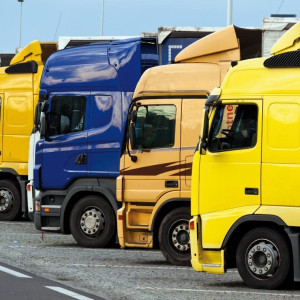‘Unsustainable’ EU: more goods moving by road, less by rail


Brussels - Europe and sustainable transport: the numbers do not add up. In the context of the Green Deal, climate neutrality commitments, and CO2 reduction, the European Union is increasingly moving its goods by road and decreasing its reliance on rail, according to findings released by Eurostat on how and to what extent Member States are meeting the 'Industry, innovation and infrastructure,' sustainable development goal number 9 of the UN Sustainability Agenda[1]. The Industry, Innovation and Infrastructure goal calls for building resilient and sustainable infrastructure and promotes inclusive and sustainable industrialization.
It also recognizes the importance of research and innovation in finding solutions to social, economic, and environmental challenges. One of the Eurostat indicators to measure progress towards this specific sustainability goal is the share of rail and inland waterway freight transport. Since 2012, the share of rail and inland waterway freight transport in total freight transport in the EU "has declined almost continuously," the European Statistical Institute[2] notes. Looking at the ratio of freight tonnes to freight kilometers, it reached 21.9 percent in 2023, a new all-time low, and a decrease of 4.6 percentage points compared to the peak of 26.5 percent in 2012.
Consequently, the share of road freight transport "increased by the same percentage over the same period." In this special ranking, Italy ranks near the bottom, fifth to last, for the amount of goods moved by train or inland waterways combined. Only 12 percent of all deliveries take place this way, compared to an aggregate average of 21.9 percent.
On closer inspection, however, over the last 20 years (the period considered by Eurostat), the share has increased by almost two percentage points: it was at 10.1 percent in 2005, and in 2016, it peaked at 14.7 percent. The data released, however, describe structural limits of a European Union that has always placed little emphasis on rail transport. If one looks only at this specific mode of transport, it emerges that in 2005, 18.5 percent of goods were transferred by rail.
After 20 years, little has changed; in fact, the figure has even worsened.
In this respect, the Green Deal and climate commitments have not given the impetus that might have been expected - still waiting for electric trucks.
English version by the Translation Service of Withub[3]References
- ^ UN Sustainability Agenda (sdgs.un.org)
- ^ European Statistical Institute (ec.europa.eu)
- ^ Translation Service of Withub (www.withub.it)